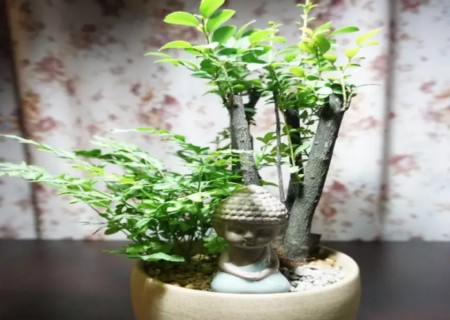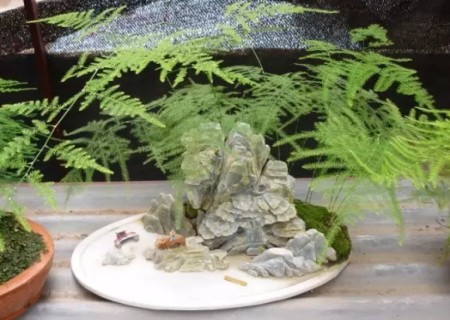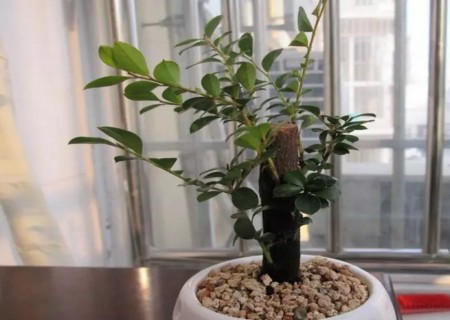Maintenance of lobular red sandalwood bonsai
Lobular red sandalwood, recognized by the plant community as a kind of sandalwood, is very suitable for planting in the courtyard of a green tree species, at the same time its old pile is also very suitable for making bonsai. Lobular red sandalwood not only has a very high ornamental, but also has the effect of awakening the brain and calming the mind. It has always been widely sought after because of its superior performance and rarity. So, how to raise lobular red sandalwood bonsai? Today, the editor will tell you about the maintenance of lobular red sandalwood bonsai.

1. Soil
Lobular red sandalwood is not strict with the soil and can grow even in high and barren places. Of course, lobular red sandalwood in a special soil environment can produce Venus. It can be planted with laterite, laterite, coastal alluvium or sandy soil.
2. Lighting
Lobular rosewood likes warmth and sunlight, so to maintain a good growth situation, adequate light conditions are essential. It is suggested that the bonsai should be moved to the balcony and other places with sufficient light for maintenance and management.
3. Temperature
Although lobular red sandalwood likes warm and well-lit growth environment, it also has strong cold tolerance and will not frostbite even in a short-term low temperature environment of about 0 ℃. And lobular red sandalwood can withstand the attack of gale below level 10.
4. Watering
Because the lobular red sandalwood is a tropical tree species, the drought tolerance is poor, so the demand for water is higher, so it is recommended to water it every 2-3 days. But watering also requires skill to avoid watering it in direct light, and watering should be thoroughly watered.
5. Fertilization
Lobular red sandalwood does not have a high requirement for nutrients, so it can be done without topdressing. Even fertilization should adopt the principle of less application of thin fertilizer. Except that some calcium magnesium phosphate fertilizer diluent can be properly applied to plants in the growing season, topdressing is not suitable in other seasons.
6. Diseases and insect pests
Lobular red sandalwood bonsai is easy to be infected with anthracnose and black mole disease during the growth of seedlings or young trees, and the main pests are golden flower insects, beetles and so on. For the above diseases, Bordeaux or carbendazim diluent can be used to spray control; for the above pests, trichlorfon can be used to kill them.
In the process of maintenance and management of lobular red sandalwood, we need to be careful that we do not often move the conservation position to reduce the growth burden of plants. Because the lobular red sandalwood bonsai has a strong ability to adapt to the environment, it is easy to get used to a growing environment, but taboo often move position.
Time: 2019-05-30 Click:
- Prev

How to raise asparagus to be more vigorous
Potted asparagus has a very high ornamental and embellishment effect, which gives people a gentle and elegant feeling as soon as they see asparagus, which is very scholarly. Moreover, when people are depressed or nervous, give them a pot of asparagus.
- Next

What about the leaves of lobular red sandalwood bonsai?
Today, I met a friend who said that the leafy red sandalwood potted teacher who bought home lost his leaves, which was very sparse and ugly, and the leaves were almost finished. Although I couldn't find the reason after many checks, I had to ask the master of the garden for advice. After the master of the garden checked the growth of the pot and the soil environment in the basin.
Related
- Fuxing push coffee new agricultural production and marketing class: lack of small-scale processing plants
- Jujube rice field leisure farm deep ploughing Yilan for five years to create a space for organic food and play
- Nongyu Farm-A trial of organic papaya for brave women with advanced technology
- Four points for attention in the prevention and control of diseases and insect pests of edible fungi
- How to add nutrient solution to Edible Fungi
- Is there any good way to control edible fungus mites?
- Open Inoculation Technology of Edible Fungi
- Is there any clever way to use fertilizer for edible fungus in winter?
- What agents are used to kill the pathogens of edible fungi in the mushroom shed?
- Rapid drying of Edible Fungi

